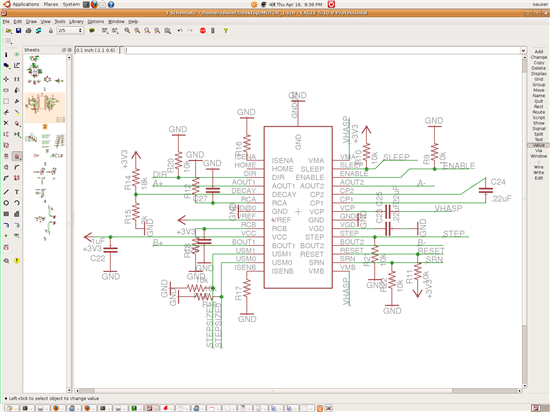Hi,
I built a circuit with a DRV8811 and I'm having some trouble with it. I have a few questions and need some help with the schematic I made.
First, the errors. My motor is just whining, and not moving, even though I am not sending out anything on the STEP pin. (I am programming an MSP430F249) The only way I can get it to stop is to set the ENABLE pin high, which works and kills the outputs.
In the circuit, I have the decay set up for fast decay and I have a 1.6 ohm resistor for Rsense on both coils (should be just over 0.25 A). I am a little confused on what the resistors and capacitors on RCA and RCB mean. The datasheet says it sets the off time in the pulse. Does this mean that this is my PWM being set by these? Do I still need a PWM on the step pin? If these do not set the PWM, than what does the off time mean? How does that relate the the timing of the PWM signal sent to the step pin? I am currently using a 1000pF cap and another 1.6 ohm resistor to set these. (I think that is somewhere between 1 and 2 ms). Is that correct? I want my PWM to send a 1 ms (ish) pulse as that is a good speed for my motor.
I am still a little confused as to why my motor whines without anything on the step pin. Could someone glance at my schematic and see if there are any obvious problems? The enable obviously works so I'm assuming I did something else wrong.
Thanks much.

